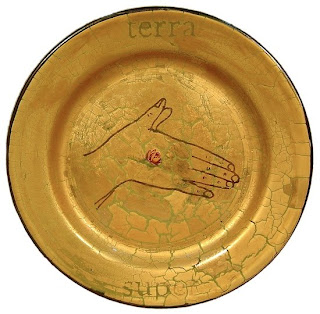


Probably the most exposure I have had to figure sculpture has been in the form of religious statues made to grace churches. I am most drawn to figures that were created in The Baroque or Byzantine eras usually of wood that are now very weathered. There is something about the deep rich hues made subtle through time that seems to
heighten the drama and the mystery. These figures are at once elegant and rustic. Powerful and fragile. They are abstracted, simplified down to the bare essentials of what is needed but also decorative. These is emotion and tenderness.


 Probably the most exposure I have had to figure sculpture has been in the form of religious statues made to grace churches. I am most drawn to figures that were created in The Baroque or Byzantine eras usually of wood that are now very weathered. There is something about the deep rich hues made subtle through time that seems to heighten the drama and the mystery. These figures are at once elegant and rustic. Powerful and fragile. They are abstracted, simplified down to the bare essentials of what is needed but also decorative. These is emotion and tenderness.
Probably the most exposure I have had to figure sculpture has been in the form of religious statues made to grace churches. I am most drawn to figures that were created in The Baroque or Byzantine eras usually of wood that are now very weathered. There is something about the deep rich hues made subtle through time that seems to heighten the drama and the mystery. These figures are at once elegant and rustic. Powerful and fragile. They are abstracted, simplified down to the bare essentials of what is needed but also decorative. These is emotion and tenderness.











